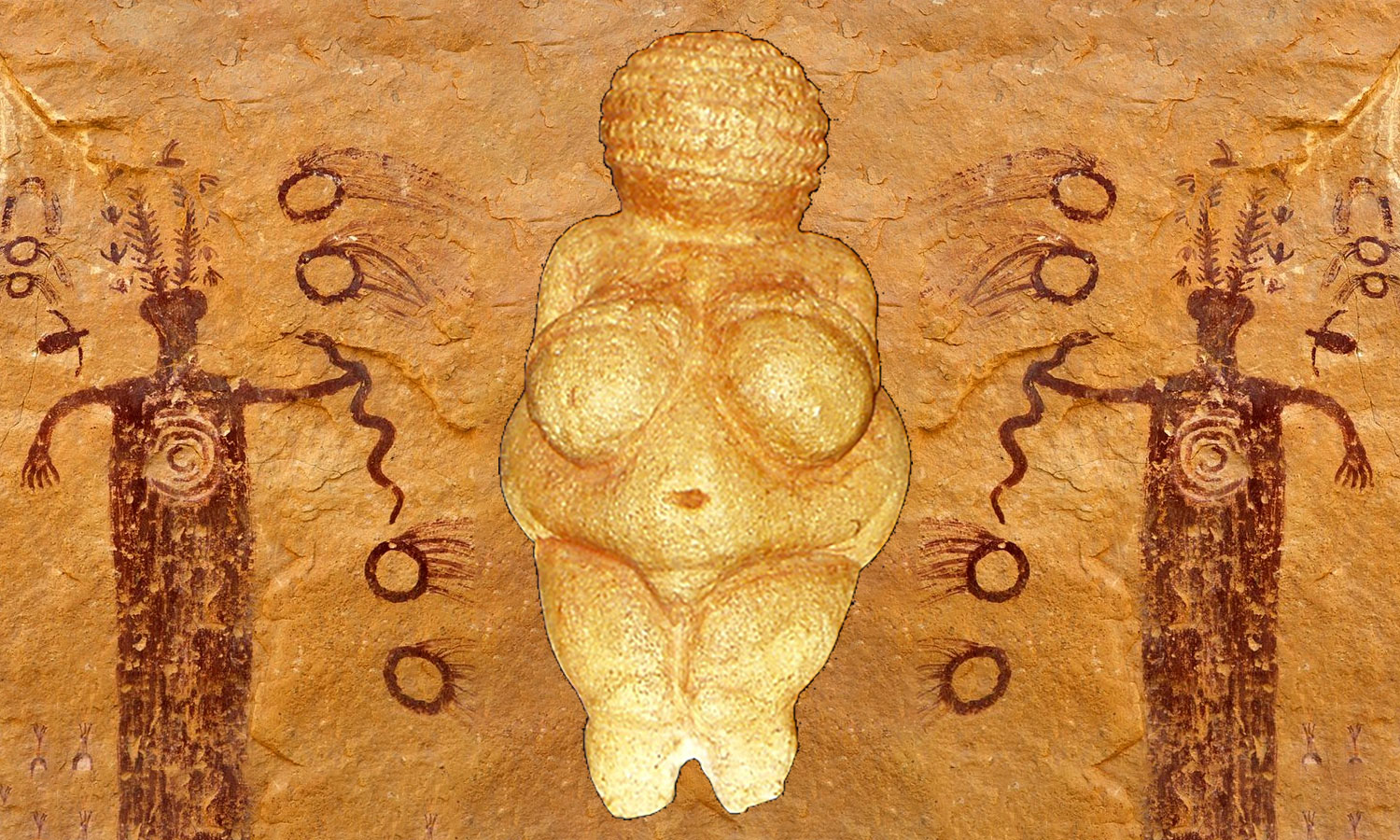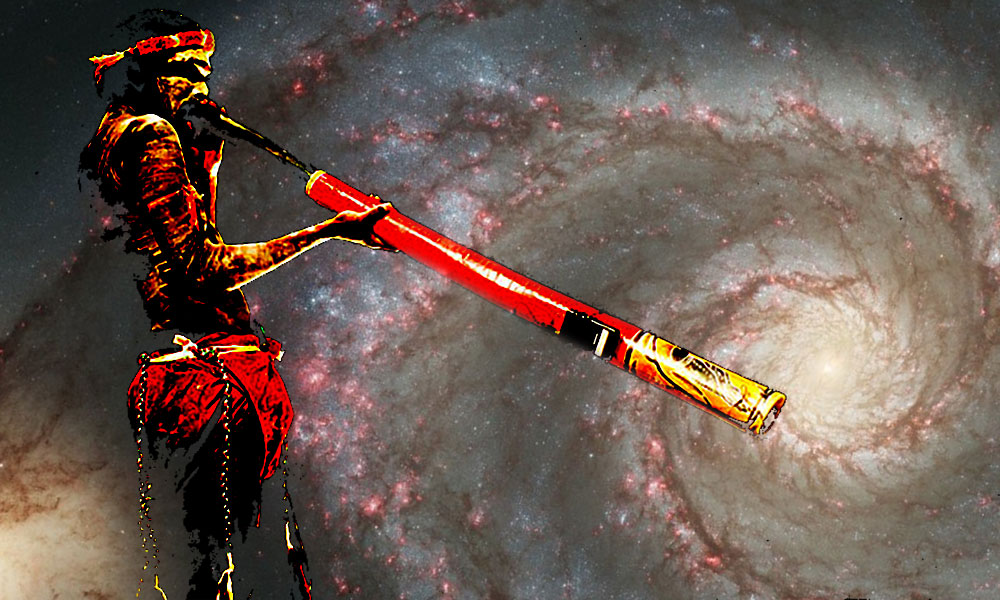
This article follows an older one called The Serpent People.
The Dream is the golden age seen by the wisdom of early civilizations, when the earth was clean and beautiful. See an infinite beach with soft scents, light breezes where it is neither hot nor cold, like an eternal spring at the origin of world. This blessed time is that of the Serpent Gods.
The Aborigines of Australia know him well, the serpent god of paradise of the origins. As soon as they can, they find him in dreams. And their dream marries the dreams of the first animal-gods, at the very beginning, when time was only a dream.
The Dream
“The Dream Time, also known as the Dream, is the central theme of Australian Aboriginal culture. The Dream Time explains the origins of their world, Australia and its people.
At the origin of the world, Baiame, the First Being, gave it its form by dreaming it.
The Dream –Tjukurpa in anangu language– is the era that precedes time, before the Earth was created, when everything was only spiritual and immaterial. But the Time of the Dream does not belong to the past, this magical world still exists and can be reached by warriors for their spiritual progress.
Through the Dream, it is possible to communicate with spirits, to decipher the meaning of omens, to cure diseases and other misfortunes. In the Aboriginal conception of the world, each event leaves a trace on earth and everything in nature flows from the actions of metaphysical beings that created the world. The significance of places and natural formations is related to their origin in the time of the dream. Some places have a dream power that makes them sacred.” (source)Wikipedia

Earth Chakras
Geobiologists who study cosmo-telluric energies, will designate these places as chakras of the earth. The most powerful are in the cathedral of Chartres and in the Potala, in Lhassa, Tibet. In these sacred places, naturally, the doors of perception open. And the subject sees the invisible. He enters the other world, not to be confused with paradise. The dream world has its traps, too. In Nagualism, warriors talk about places of power. All these expressions refer to the same reality. They are doors.
Nature is full of doors where the warrior teleports to the other side of his reality. Before his steps open here and there gaps through which he joins the Dream. It is as simple as that. Years are needed to clean the doors of perception. One day, they will open before the impeccable warrior. It’s called seeing. Aboriginals use it all the time, which makes it difficult for rigid brains to understand.
If the doors of perception were cleansed every thing would appear to man as it is, Infinite. For man has closed himself up, till he sees all things thro’ narrow chinks of his cavern. ― William Blake
And yet, what a vista! “For example, the Perth-area Noongar believe that the Darling Scarp Rock Escarpment is the body of a Wagyl, a gigantic Dream-time Ophidian who meandered through the landscape to create lakes and rivers.” (wikipedia)
This giant ophidian evokes other giants, the dinosaurs. Legends and engravings say that man would have known them. And curious fossilized artifacts seem to support this hypothesis.
Protective Dragons
In Australia and New Zealand, there are several types of dragons. These dragons are creatures that often live near water. The Rainbow Snake named Ngalyod is one of those dragon snakes that have been revered by Aboriginal people for over 10,000 years. It is considered the permanent inhabitant of wells and thus controls water, the most precious source of life. Sometimes unpredictable, it is the Rainbow Snake that competes with the relentless sun, to replenish water reserves. This epic fight is described in the Dream Time.
He is a benefactor to his people, but he can also punish those who break the law. He gives and takes life. The mythology of the Rainbow Serpent is closely related to the earth, water, life, social relationships and fertility. There are many stories associated with the Rainbow Snake, which reflects the importance of this mythical being in Aboriginal traditions.
For the Aboriginal nomad walking in the bush, the snake is an Earth sign indicating a nearby water point and the rainbow is a Sky sign indicating a recent rain in this direction. Both are beneficial signs.
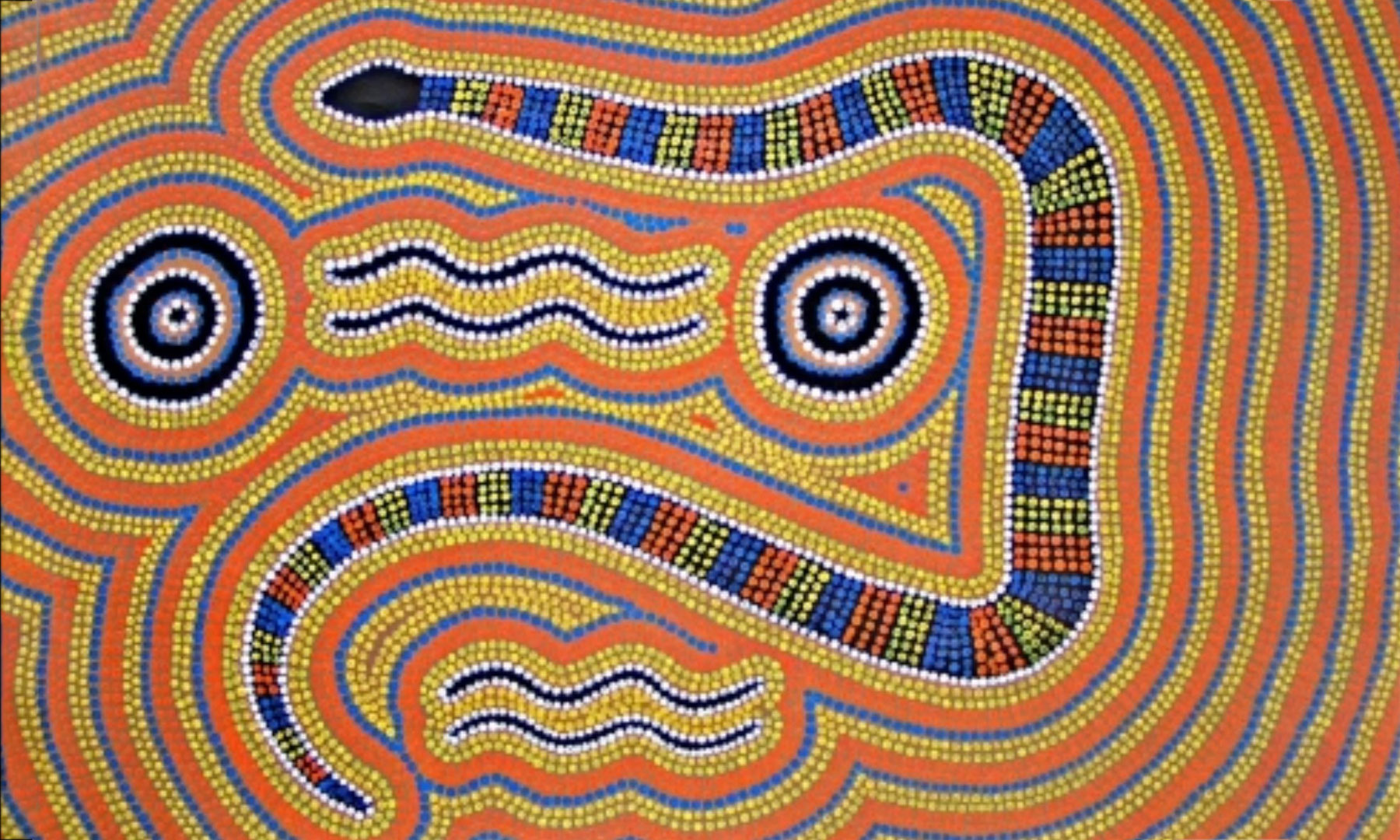
The snake of the Aborigines
“Most Aboriginal tribes believe that all forms of life, plants, animals and humans, are part of a vast and complex set of interactions. Its origin goes back to the great minds of the ancestors of the Dream era.” (Wikipedia)
But not only. The time of the Dream, for the aborigine, is not a closed and completed world. It is being done, here and now. But the main lines are drawn from the beginning. The time of the Dream is another way of being in the world. In this other world that is everywhere.
This other world where we, the mutants, hardly go, except on a drunken night and through the wrong door. According to some accounts, the spirits of the ancestors who created the Earth withdrew as the Dream faded, leaving room for men.
We will note that this culture, the most sensible of all, knows that it is our ancestors, and not gods, who created us. Our ancestors were made of pure light. They faded as soon as we fully materialized. (Rudolf Steiner, lectures)
The time of the Dream is the time when beings of light lived among men. The episodes of the Dream were transmitted through oral tradition and rock paintings.
Even today, following the cave paintings with his eyes, and guided by the memory of his ritual songs, an aboriginal shaman can “read” the millennial tradition of the time of the Dream. Then it can unfold, over the sacred trance, the unpublished episodes that are the continuation of the Eternal Dream.
The snake of the Amerindians
In North America, the Plains Indians have a legend about the rainbow snake. It was a heat wave of exceptional gravity. The savannah was suffocating. The hot air shook on the rustling prairie, the lakes and rivers were dry, the springs dried up. The inhabitants lamented.
A small snake comes to help them. It addresses the surprised humans: “I can help you with my great magical powers. With all your might, throw me in the air.” “You will kill yourself by falling down and we will be well advanced,” replies the sullen sorcerer. He has no confidence in the snake. He’s afraid of the competition of a magician more powerful than him.” I wouldn’t fall back. Up there grows a blue ice meadow. I’ll scrape some snow for you.”

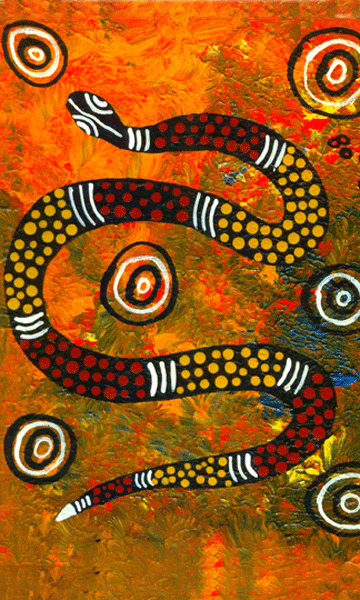 The rainbow
The rainbow
The sorcerer throws the snake with all his might, determined to end it. Ascending into the sky, the snake lies down until its head and tail touch the earth, on either side of the horizon, while its body curves into the sky. It wiggles to scrape the celestial ice with its scales. Gradually, her body changes color, from red to yellow, green, blue, purple.
The ice melts, the rain falls on the cracked earth that becomes mud. Thanks to this beneficial shower, everything is reborn. The water comes back into the rivers, the springs sing, the animals are back, the roses are blooming. And so are the Indians.
In their joy, the Indians turn to heaven. The rain that waters their bodies gives them confidence and vitality. Under the rain, they dance in honor of the flying snake. Since that day, whenever it rains in the blue sky, the flying snake curves its elastic body, drawing the multicolored ribbon that bears its name. (legend from Amerindian cosmology)
Dragon Ogopogo
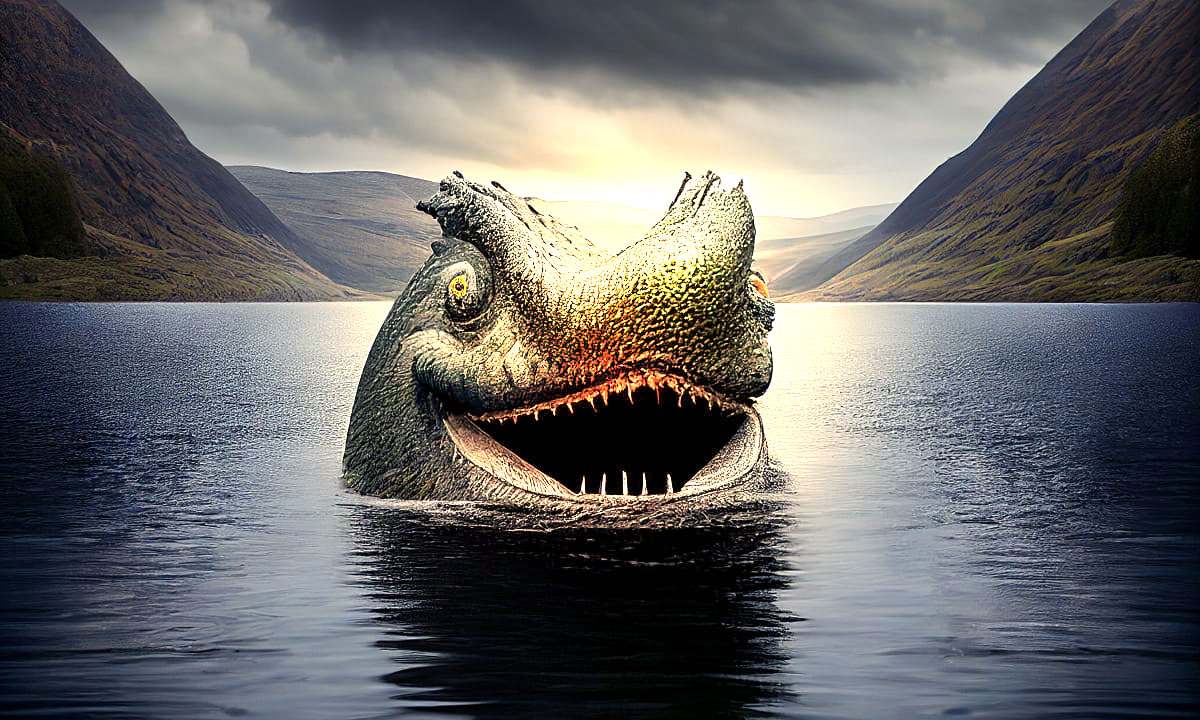
Ogopogo is a lake monster that first appears in the stories of the Secwepemc (Shuswap) and Syilx (Okanagan), First Nations of Canada, in present-day British Columbia. The creature reportedly lives in Okanagan Lake and is described as a large dragon-headed snake. The Secwepemc and Syilx called the monster Naitaka – “water spirit” or “water demon” – while the origin of the name “Ogopogo” is disputed. It is said that the Ogopogo demands a tribute from anyone wishing to cross Okanagan Lake and that, if nothing is offered, the person or people are drowned in a sudden storm caused by the creature.
Great horned snake
The snake, the horned snake and the water snake are common figures in the legends of all the Amerindian nations of North America, whether it is the Ogopogo or the Flathead monster, the Cherokee Crystalline Uktena or the Great Horned Serpent of the Sioux and other Plains Indian nations.
Serpent Mound, the archaeological site of Peebles, Ohio, USA, attributed to the Adena or Fort Ancient Amerindian cultures, could be a tribute to their own version of the horned snake that has always possessed magical properties and often, but not always, symbolized transformation.

Snakes often serve as antagonists in Native American tales, but they are not always malicious, as they sometimes appear as challenges that the hero must overcome to achieve a certain goal. The great horned snake, however, still appears as an opponent of Thunderbird, the Thunderbird. While Thunderbird represents order, light, birth, growth and life, the Great Horned Serpent symbolizes chaos, darkness and death.
The dreams of the Yopo
In the Amazon, the Yanomanis use a ritual drug to access the Dream Time. This is ayahuasca, known throughout Latin America. In the visions caused by ayahuasca, images of dinosaurs are often present. But their wildest dreams, populated by various ophidians, lizards, snakes, dragons, are caused by an even more powerful psychedelic drug, the yopo.
Yopo is a large tree in the legume family native to the Caribbean and South America. Anadenanthera peregrina grows twenty meters high and produces a copious amount of pods. Notably, in each pod, there are between three and ten flat beans or seeds. Prepared and dried, these seeds become a powerful psychedelic substance. The consumption and shamanic history of yopo, jopo, cohoba, parica or calcium tree dates back to the dawn of time. Europeans first described its consumption in 1571 and contemporary archaeology dates back 4,000 years of yopo consumer accessories in Argentina. (source)
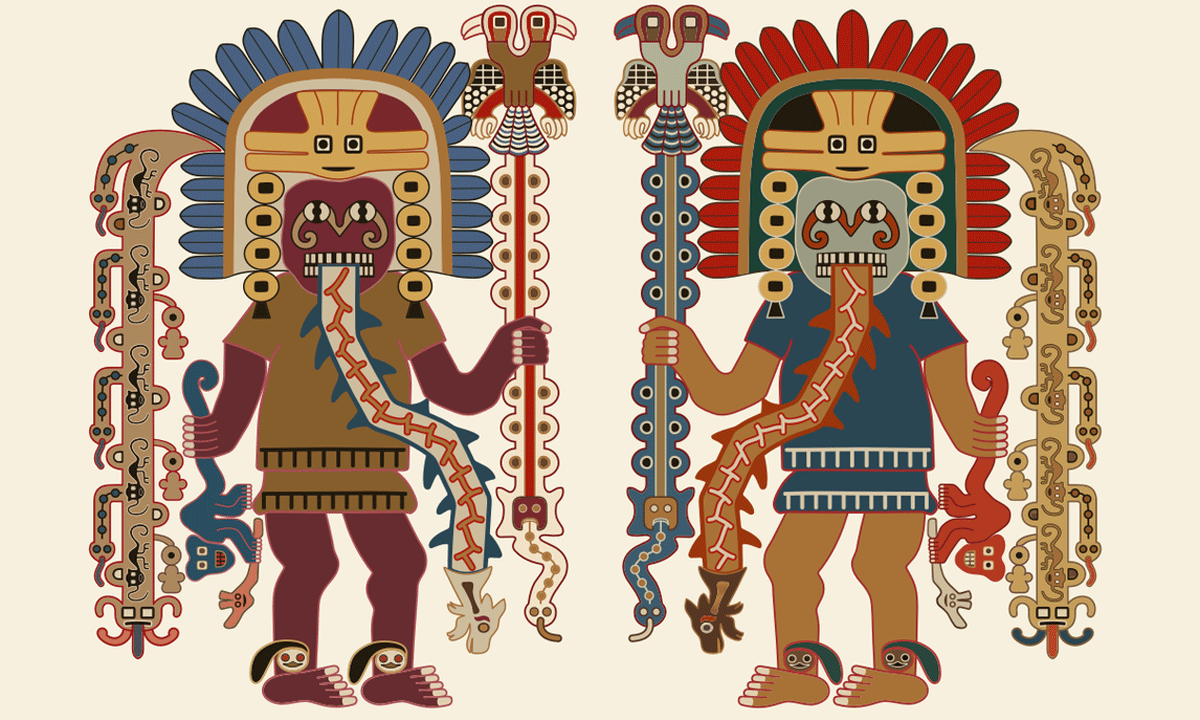
Inca Dragon Goddess
In the Andes, the oldest traditions mention serpentiform gods or goddess. Pacha Mama, Mother Earth, dragon goddess, was responsible for the life of everything on earth. The success and abundance of cultures depended on this great goddess. The Incas used to offer him coca leaves to have a good agricultural production.
“Pachamama, like all the Andean deities, has two personalities, one generous and fertile, the other vindictive when it does not receive its due. The relationship that is established between her and men is so precarious that some indiscreet actions or equivocal gestures, any breach of protocol can lead to reprisals from this divinity” (source)
Other Inca gods were snakes and dragons. Thus Urcaguary was depicted as a snake with a deer head and tail adorned with gold chains. God of hidden treasures and buried riches, he loved to crawl under the earth in search of gold and precious jewels that he carefully maintained and kept in a secret cave.
The deer-headed snake is one of the common descriptions of horned dragons. If they have no horns, old legends depict them as lion-headed snakes. As for Urcaguary’s passion for treasures, it is a well-known feature of all the more recent legends about dragons.
It seems that it is not a fiction: the Gnosis explains that the archon major Mammon, dragon too, is the god of money, the fart and money. He is currently the most important god on earth. Most humans pay tribute to him every day.
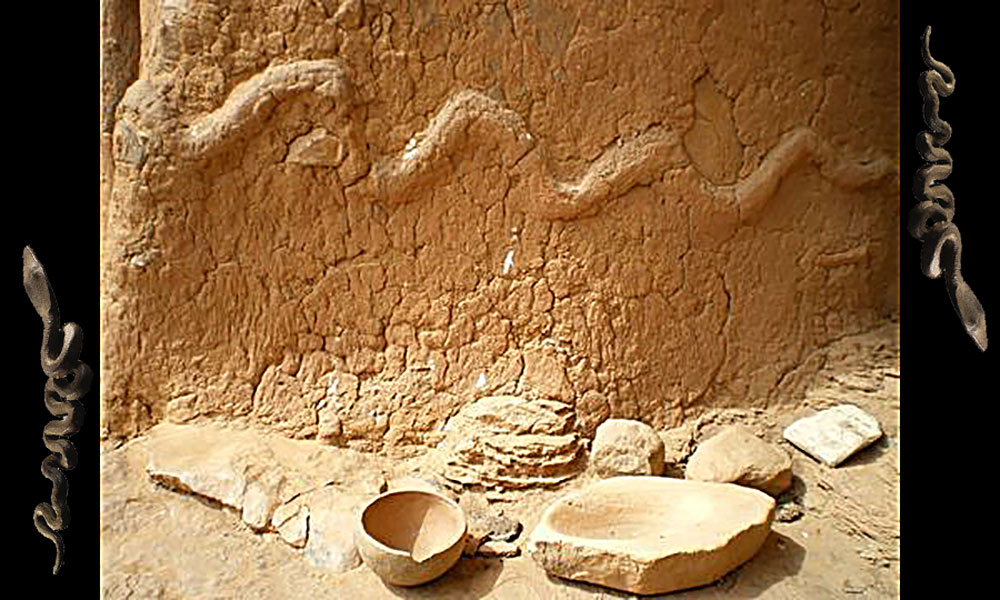
The Snake of the Dogons
In Africa, an ethnic group in Mali, the Dogons also worship a snake god, the Serpent Lébé, an ally and protector of humans. In the beginning, God Amma made men immortal creatures. At an advanced age, they turned into snakes, thus accessing the world of geniuses (Yéban).
It should be noted that even among the Dogons patriarchy exerted its ravages and spread its lies. In the beginning, it was not a god who made men immortal creatures. It was the Great Goddess. Gnosis and other sources are clear on this point. The Dogon version even kept its name. It is called Anna or Ama, depending on the culture.
“Lébé Séru is the first ancestor of the Dogon mythology. He gave birth to two sons.” Again, there was masculinization: either Lébé Séru was a woman, or his wife gave birth. And no doubt two girls! But it is difficult to fight against such a priori powerful. The Dogons are among the African peoples most faithful to their ancestral beliefs. It is impossible to make them admit such a counter-truth.
And that’s why your daughter is mute!In Molière’s “Le médecin malgré lui”, Lucinde lost her voice, or simulated it, following an upset love.
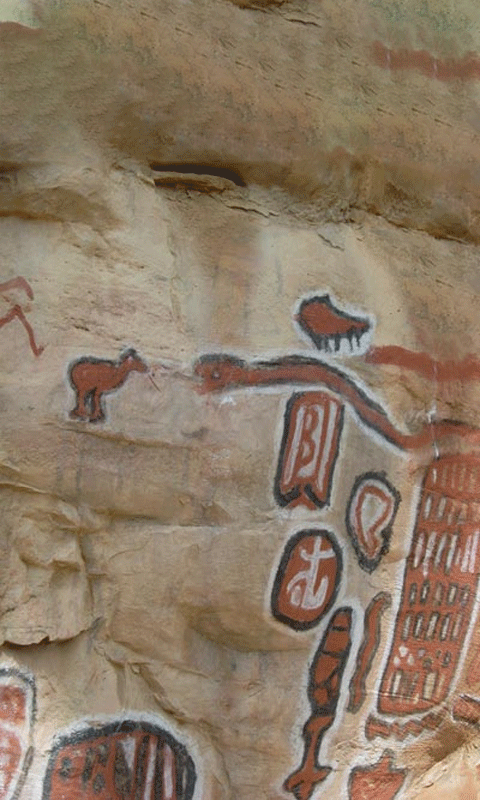
The Desplagnes canopy
Between Bandiagara and Mopti, in the rocky cluster that dominates the village of Songo, this «stony mushroom» described by Michel Leiris, on a wall called «Desplagnes canopy», named after the lieutenant who discovered it, are painted signs whose meaning can only be exhausted by the initiates.
Let us return to the Dogon account. The eldest son begat the tribes: Dyon, Domno and Ono. The second son prematurely turned into a serpent. Having broken a prohibition, he died of it. As a result, death appeared in the world of men. Since then, the Dogons die keeping human form.
The Dogons have several ancestors called Nommo, including the snake Lébé. It is said that there is one Lébé per region and that the Hogonsee below is the priest of his worship:
“The leper of mythical times had been buried in the primordial field and men, when they found themselves too cramped in their cantons, resolved to take his remains with them to the new countries they thought they would discover.
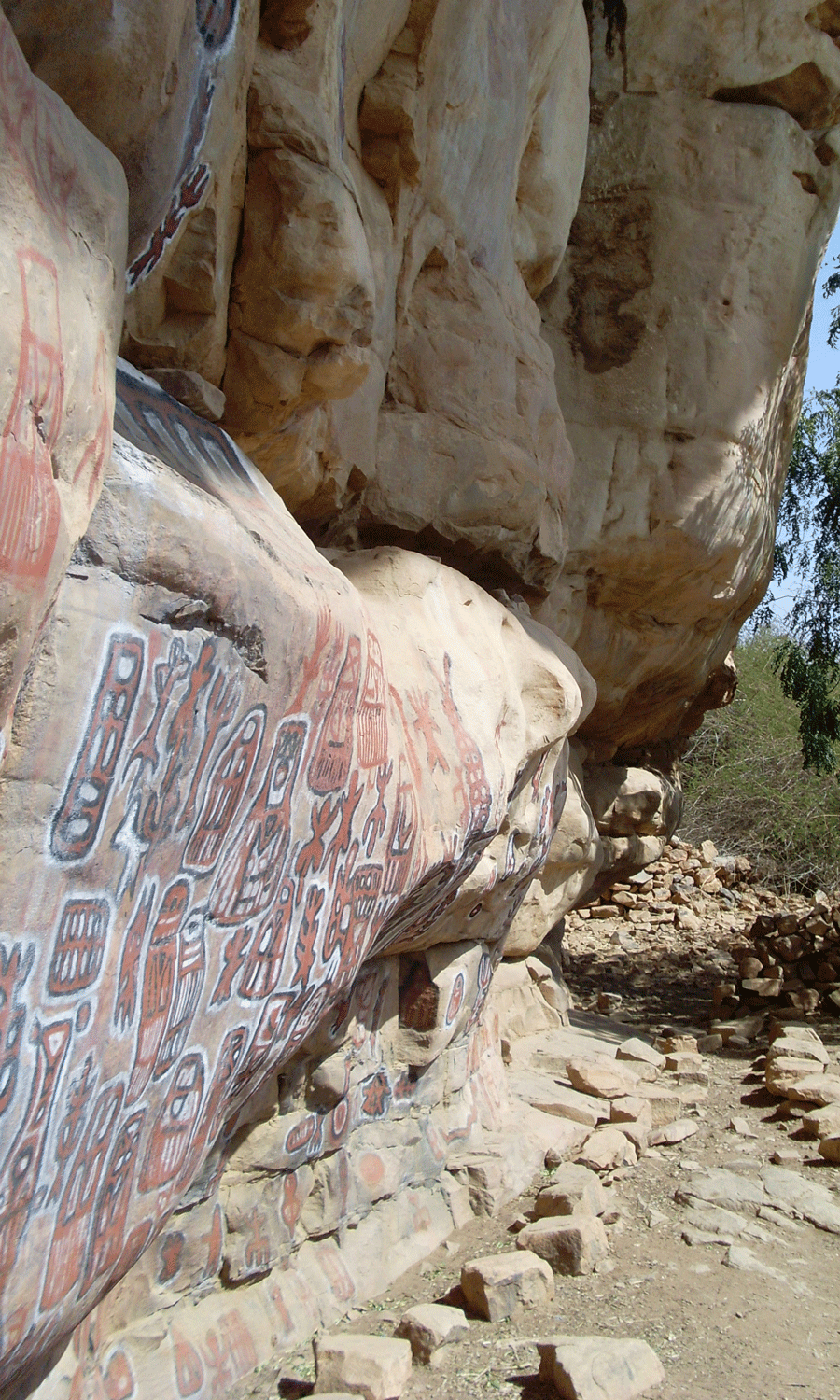 Having dug the tomb, their elder found the stones of covenant and also a great living serpent. It was he who would have guided the first Dogons on the path of migration towards the cliffs of Bandiagara: “And the serpent Lébé, everywhere present, unique and multiple like a God, followed each founder.” This snake therefore plays a key role in Dogon cosmogony (Université de Lyon – L’Auvent Desplagnes).
Having dug the tomb, their elder found the stones of covenant and also a great living serpent. It was he who would have guided the first Dogons on the path of migration towards the cliffs of Bandiagara: “And the serpent Lébé, everywhere present, unique and multiple like a God, followed each founder.” This snake therefore plays a key role in Dogon cosmogony (Université de Lyon – L’Auvent Desplagnes).
The Hogon is the highest spiritual authority among the Dogons. It is the representative of the cult of the lepe, this snake of origins that carried the Dogons who fled Islamization. He led them to a new country, Bandiagara, where they are still. The Hogon is chosen among the oldest men in the village. After his election he must follow six months of imprisonment, during which he is not allowed to shave or wash. He wears white clothes and no one is allowed to touch him. His meals, prepared by unclean girls, are brought to him in particular cuts, ogo banya. He receives these cups from his predecessor or during his induction ceremony (wikipedia).
Star-Crossed Women
To be clear, considering women status, Dogon cosmology is no worse than any other. It contains the same amount of truth and lies as dozens of mythologies. This is what revolts me: the global consensus to minimize the role of women in our origin. And yet, without the woman, would a descendant have been possible?
Goddess Ana is a humanoid reptilian. It turns out that female reptiles can reproduce without sperm. That’s parthenogenesis. She was at the origin of our humanity, before badly inspired scribouillards transformed her into a mammal virgin, poor Mary who did not ask for so much. Thus the mother of Jesus would have been engrossed by the operation of the Holy Spirit. Another male!
